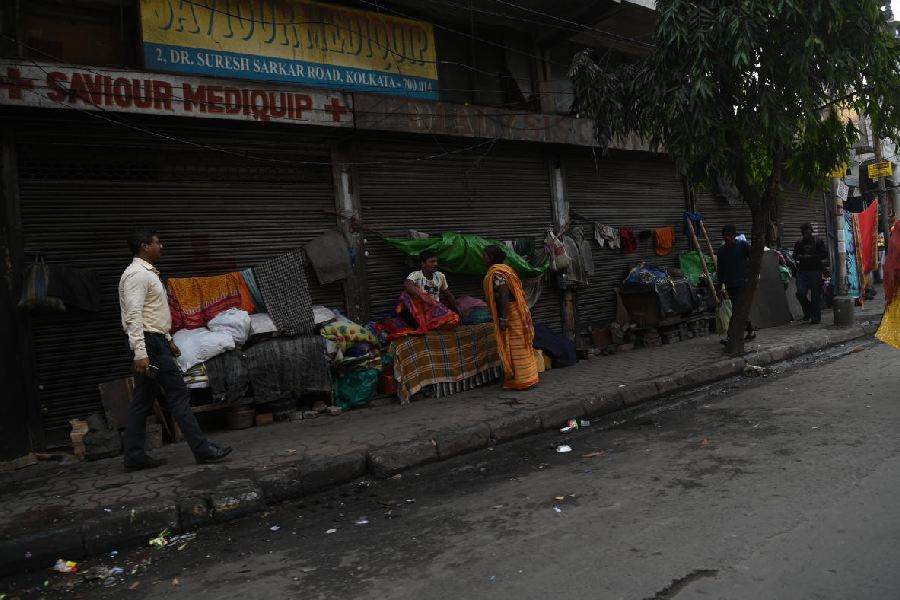No season is easy for them. But the heat has brought new challenges for the city’s “homeless”.
A family living on a pavement in Moulali keeps shifting between two pavements to avoid the sun. A mother on a pavement near Ballygunge Phari has bought a rechargeable fan for her 10-month-old daughter. The families living here are cooking only at night to escape the heat of burning biomass twice a day.
A survey conducted in 2018, following an order from the Supreme Court, showed that the city had 7,272 homeless people. The numbers may have grown since the outbreak of Covid as the pandemic had robbed many of their livelihood, forcing them to move to the city in search of work.
Asida Khatun, 18, lives with her grandmother on a pavement near Moulali in central Calcutta. Every day, they shift from one pavement to another across the road. Sometimes they also shift from one side of the same pavement to the other with a
shade.
“It is impossible to stay inside our hut once the sun appears. We move to the pavement across the road and stay there as long as there is shade,” said Asida, as she kept fidgeting on her smartphone. Her grandmother begs for alms on the streets. Asida said she quit school after the pandemic and is now looking for a job as a house help.
On a stretch of the pavement near Ballygunge Phari in south Calcutta, Mina Karmakar, 24, said she and her husband had to buy a battery-run fan for their infant daughter. “We can bear with this heat but I worry about my daughter. She needs a little bit of comfort. She cannot sleep in this heat,” Mina said.
The fan runs for three hours and needs recharging. Mina said they take it to a nearby mobile repairing shop and gets it recharged for Rs 10 each time.
Several other families live along this pavement in Ballygunge. “We are cooking only at night. We pour water on rice and eat panta bhaat for lunch the next day,” said another woman.
Some of the pavement-dwellers bathe in the open with water collected from municipal taps, while some, especially women, prefer paying and bathing in a closed enclosure.
Calcutta has been in the grip of above-normal temperatures for at least the past fortnight.
Scientists apprehend that such long and extreme heat conditions will recur as the world keep warming. The Intergovernmental Panel on Climate Change (IPCC), a United Nations panel, said in its sixth assessment report (AR6 Synthesis Report) published last year that “global surface temperature has increased faster since 1970 than in any other 50-year period over at least the last 2000 years.”
The actual temperature experienced by the homeless could be even more than what the weather stations announce, said Sai Rama Raju M, senior associate, academics & research, Indian Institute for Human Settlements (IIHS), Bengaluru.
“Those living in a part of the city that has less green cover and more concrete and road infrastructure will experience more temperature as concrete absorbs heat. The weather stations record air surface temperature, whereas the land surface temperature could be much higher,” said Rama Raju, who researches on informal settlements and heat stress vulnerability.
Exposure to continuous high temperatures and heat makes the homeless more vulnerable to heat-related ailments and mortality, he said.
Just like the homeless, those working at construction sites, parking attendants and hawkers, too, are more vulnerable to heat stress.










